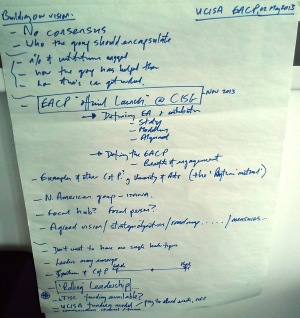Some Sunday morning rambling & a couple of old Dilbert cartoons which may be pertinent & should at least be a amusing…
So, you know the scenario. You’re in there with the senior management team & they want an answer to the question: why should we invest in this thing called Enterprise Architecture?
& the answer is: I dunno; or, you tell me; or maybe, you shouldn’t.
Because they are, of course, asking the wrong question. They should be saying: how do we improve our customer experience? Or, how do we reduce the cost of procurement? Or, how do we decide what we could target as shared services? Or…a thousand other critical business questions. To any or all of which EA may be part of the answer.
But you’ve been invited along to a meeting to explain why they need EA. So you’ve come to the wrong meeting.
& because they’re asking the wrong question, you’ll probably have to give them the wrong answer.
& you can’t directly tell them they’re asking the wrong question. Well, go for it if you feel like it. After all, they’re only senior management…
There’s a lot of discussion in EA circles about how exactly do we sell EA to senior management? & the answer is, of course, you don’t.
You don’t sell someone a spade if they don’t know they need to dig a hole. At least, I hope not – don’t want to be in the snake oil business. So senior management need to know what problems EA will solve, or what new opportunities EA can open up – they need to see what bigger better hole they can dig (themselves into?) with this shiny new implement (maybe not the best analogy, then, but you have to start somewhere).
So EA isn’t always the answer – it depends on the question, & you have to make sure the right questions are being asked then you can make sure you have the right answers.
So in that meeting, you need to get them to ask the right questions – ‘I dunno’ may be a pretty good first answer – followed by, you tell me what you need to do, & then I’ll tell you if EA can help you do it. Or, maybe not…because…
If you’re an Enterprise Architect, you might think EA is always the answer, or at least part of it – & I agree, you’re probably right. But the best way to test a hypothesis is to assume that you’re wrong – & maybe the customer doesn’t really need to dig a hole, at least, not until they’ve chopped down that tree. Great thing about EA is, it’s more like a Swiss Army knife than an axe or a spade – but if the customer only wants to dig that hole or chop down that tree, some kind of multitool might seem like overkill. So, find that hole that needs digging, use EA to help it get dug, & then…




